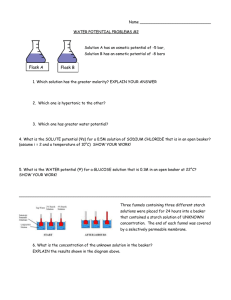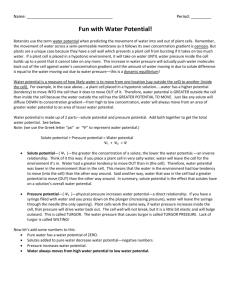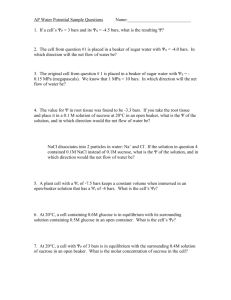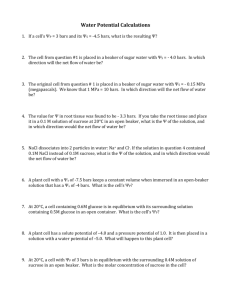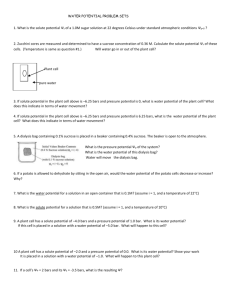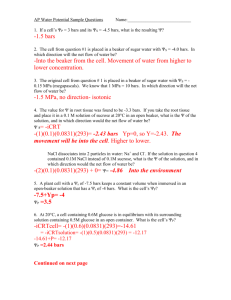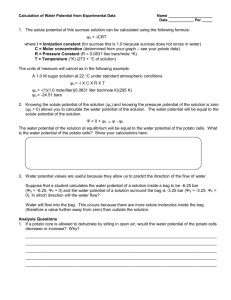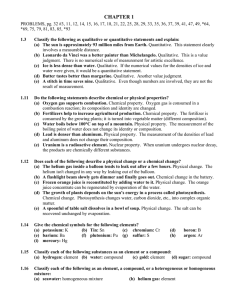AP Water Potential Sample Questions
advertisement
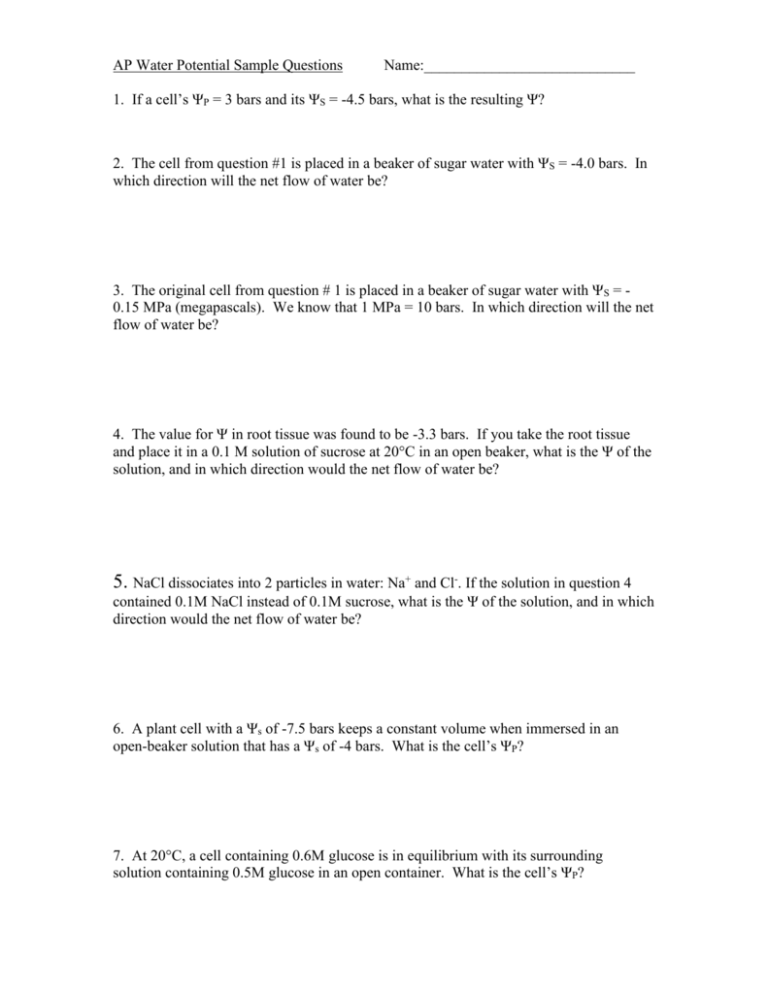
AP Water Potential Sample Questions Name:____________________________ 1. If a cell’s ΨP = 3 bars and its ΨS = -4.5 bars, what is the resulting Ψ? 2. The cell from question #1 is placed in a beaker of sugar water with ΨS = -4.0 bars. In which direction will the net flow of water be? 3. The original cell from question # 1 is placed in a beaker of sugar water with ΨS = 0.15 MPa (megapascals). We know that 1 MPa = 10 bars. In which direction will the net flow of water be? 4. The value for Ψ in root tissue was found to be -3.3 bars. If you take the root tissue and place it in a 0.1 M solution of sucrose at 20°C in an open beaker, what is the Ψ of the solution, and in which direction would the net flow of water be? 5. NaCl dissociates into 2 particles in water: Na+ and Cl-. If the solution in question 4 contained 0.1M NaCl instead of 0.1M sucrose, what is the Ψ of the solution, and in which direction would the net flow of water be? 6. A plant cell with a Ψs of -7.5 bars keeps a constant volume when immersed in an open-beaker solution that has a Ψs of -4 bars. What is the cell’s ΨP? 7. At 20°C, a cell containing 0.6M glucose is in equilibrium with its surrounding solution containing 0.5M glucose in an open container. What is the cell’s ΨP? 8. At 20°C, a cell with ΨP of 3 bars is in equilibrium with the surrounding 0.4M solution of sucrose in an open beaker. What is the molar concentration of sucrose in the cell? 9. If a plant cell has a lower water potential than its surrounding environment and if pressure potential is equal to zero, is the cell hypertonic or hypotonic to its environment? Will the cell gain or lose water? Explain. 10. If a potato is allowed to dehydrate by sitting in the open air, would the water potential of the potato cells decrease or increase? Why? 11. You are stranded in a lifeboat with several other people in the middle of the ocean. You have run out of clean drinking water and are very thirsty. The others have started to drink seawater to quench their thirst. Since you’re waiting for rescue, you decide to solve a couple of water potential problems to determine if drinking sea water is a good idea or not. a. The majority of dissolved ions in seawater is NaCl, roughly a 0.5M NaCl concentration. The ionization constant of NaCl is 2.0. Calculate the solute potential for seawater if you know that the water is 2°C. b. Your own cells have a 0.15M NaCl concentration. Calculate the solute potential for your own cells, knowing that body temperature is 37°C. c. Using your knowledge about water potential, if you drink the seawater, what will happen when the seawater comes into contact with your body’s cells? d. Is drinking seawater a good idea for survival? What effect will drinking seawater have on you and your chances of surviving until you are rescued?

